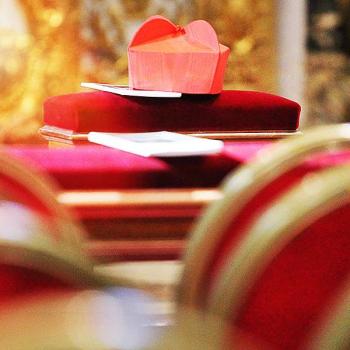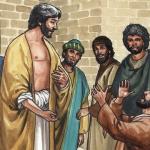
Seoul, South Korea, Jul 30, 2014 / 02:04 am (CNA/EWTN News).- During his August visit to Korea, Pope Francis is to beatify Paul Yun Ji-chung, the nation's first martyr, as well as 123 companions who were killed for the faith in the 19th century.
The Roman Pontiff will be in South Korea Aug. 14-18, visiting the shrine of the martyrs of Seo So-mun the morning of Aug. 16. Later that day, he will travel to Seoul's Door of Gwanghwamun to say Mass and beatify Paul Yun Ji-chung and his companions.
Unlike China or Japan, Catholicism in Korea was not introduced by a colonial or foreign power. Korean scholars learned at the beginning of the 17th century about the teachings of the Gospel, which were spreading in China, and undertook travels to the Jesuit missionaries there in order to study it.
They returned to their country to promote the faith, and it spread so quickly that only a few decades later, when a Chinese priest managed to enter the country, he found a well-established, though ostracized, group of Catholics numbering in the thousands.
Being a strictly hierarchical society made up by privileged scholars and nobility on the one hand, and commoners and slaves on the other, Christianity was seen by the authorities as dangerous heterodoxy to the political system of Confucianism, and as a religion that intended a social revolution.
Catholics called themselves “friends of the Lord of Heaven”, implying a relation to God based on equality, unacceptable to Confucians.
Authorities tried to prevent the faith from spreading by prohibiting Catholic books, then available in both Korean and Chinese.
Widespread, violent persecution occurred in several spurts thoughout the 19th century, with more than 10,000 persons martyred.
The first of these persecutions occurred in 1791.
Paul Yun Ji-chung was converted by his uncle, a scholar, and that year he and another Catholic, James Kwong Sang-yon burned their ancestral tablets, acting in accordance with their understanding of Catholic teaching.
In what became known as the Chinsan incident, the two members of the nobility were charged with heterodoxy from Confucian norms, and beheaded.
The next violent persecution was in 1801, when hundreds of Catholics were executed, and hundreds more exiled.
The same happened in 1839, a few years after missionaries arrived from Paris.
In 1846, the Pyong-o persecution claimed another round of martyrs for Korea, including Andrew Kim Tae-gon, its first native priest.
The Pyong-in persecution of 1866 claimed most of the martyrs for Korea – 8,000 were killed, including nine foreign priests.
Of the thousands of Korean martyrs, St. John Paul II canonized 103 on May 6, 1984; during the Mass, he preached that “in a most marvellous way, divine grace soon moved your scholarly ancestors first to an intellectual quest for the truth of God’s word and then to a living faith in the Risen Savior.”
“From this good seed was born the first Christian community in Korea,” he said. “This fledgling Church, so young and yet so strong in faith, withstood wave after wave of fierce persecution … the years 1791, 1801, 1827, 1839, 1846 and 1866 are forever signed with the holy blood of your Martyrs and engraved in your hearts.”
“The splendid flowering of the Church in Korea today is indeed the fruit of the heroic witness of the Martyrs. Even today, their undying spirit sustains the Christians in the Church of silence in the North of this tragically divided land.”















